blog»Business Strategy»Inside the Boohoo Marketing Strategy: Growth, Influencers, and Speed

Inside the Boohoo Marketing Strategy: Growth, Influencers, and Speed
2025/06/24
You can read this article in about 11 minutes
Introduction
Boohoo didn’t just disrupt fashion, it rewrote the rules of how fast fashion works online.
In a space dominated by seasonal collections and legacy retail habits, Boohoo turned speed, influencers, and social media into a competitive advantage. New styles drop daily. Campaigns launch overnight. And their connection with Gen Z audiences is anything but accidental.
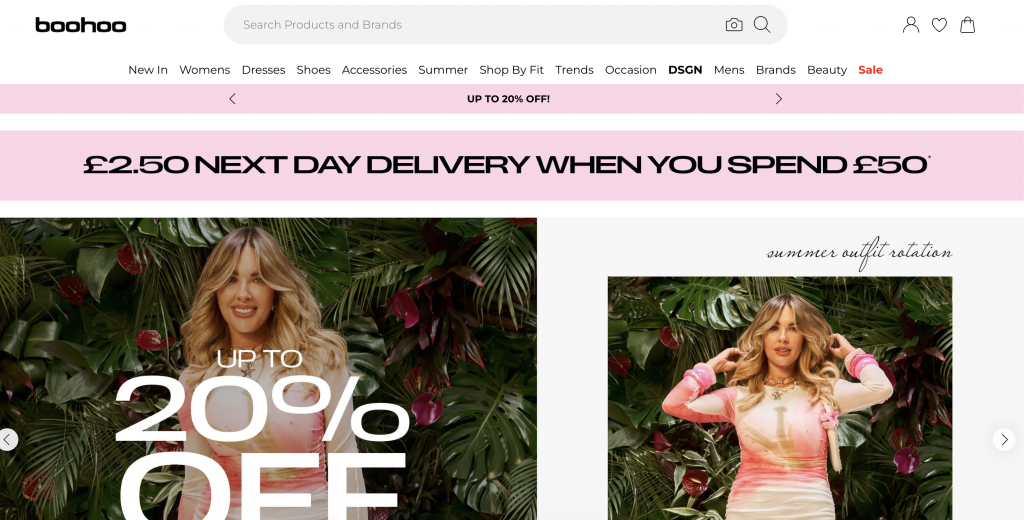
From Instagram to checkout, Boohoo has built a system that moves quickly, speaks directly, and sells fast. But behind the flashy drops and discount banners is a smart, evolving marketing strategy that keeps the brand in the spotlight and in the shopping carts.
In this article, we’ll break down the Boohoo marketing strategy that fueled its explosive growth, and share what marketers can learn from one of the fastest-moving brands in e-commerce.
1. Speed as a competitive advantage
Boohoo isn’t just fast fashion—it’s fashion in real time.
The brand built its reputation by dropping new styles daily, not seasonally. It responds to trends within days, sometimes even hours, of them hitting social media. This rapid pace isn’t accidental. Boohoo’s supply chain is designed to move fast, with short production runs, close supplier relationships, and constant data feedback from site behavior and social trends.
Marketing keeps up with this speed. Flash sales, email blasts, app notifications, and TikTok-style videos are all used to push new arrivals and create urgency. The messaging is always current, tied to what people are actually talking about that week.
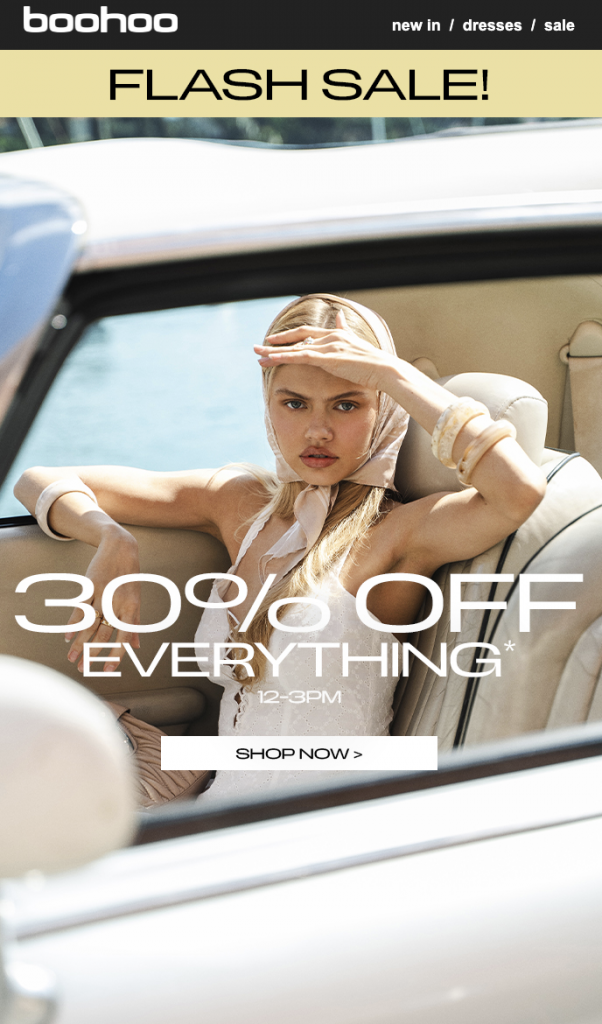
This creates a shopping experience that feels alive. There’s always something new, and always a reason to come back.
What marketers can learn:
- Speed creates relevance and keeps your brand top of mind
- Your content and campaigns should match the rhythm of your product releases
- A fast feedback loop between trend, product, and promotion is a powerful growth engine
2. Influencer-driven everything
For Boohoo, influencers aren’t a tactic, they’re the foundation of the brand’s growth engine.
From day one, Boohoo invested heavily in social media creators, especially on platforms like Instagram, YouTube, and more recently, TikTok. The brand didn’t just chase celebrity names. It focused on building long-term relationships with reality stars, fashion micro-influencers, and Gen Z creators who felt authentic to their audience.
Strategic partnerships with stars from shows like Love Island helped Boohoo dominate the UK fashion conversation. These influencers became more than promoters, they co-created collections, shared behind-the-scenes content, and extended Boohoo’s reach with audiences that trusted them.
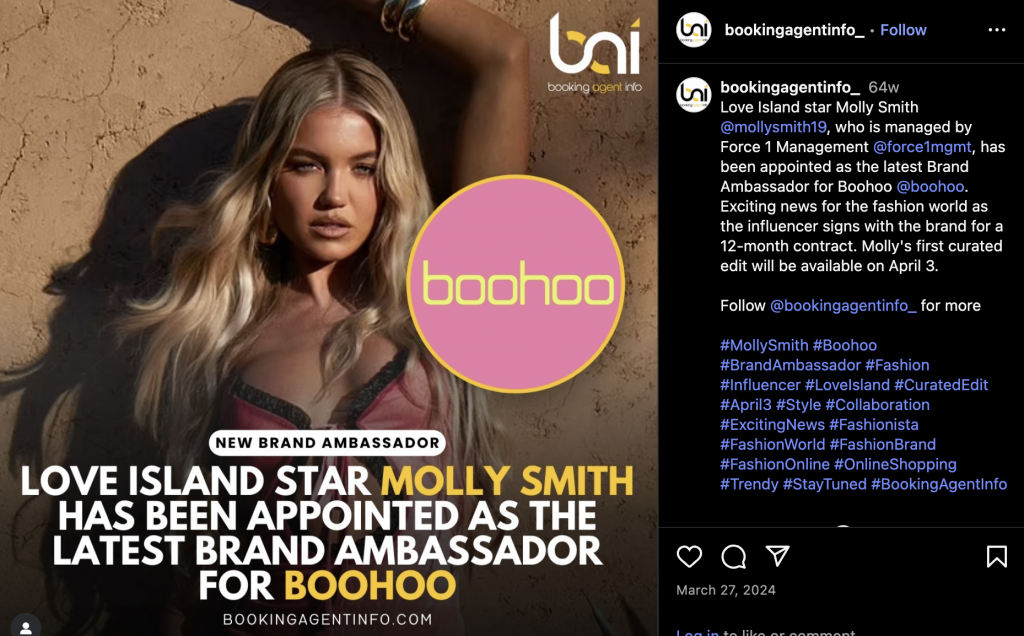
The result? A constant stream of lifestyle content that blends seamlessly with user feeds while reinforcing Boohoo’s identity as trendy, affordable, and relatable.
What marketers can learn:
- Influencer marketing works best when it’s embedded into your product and brand, not just used for promotion
- Choose creators who reflect your audience’s lifestyle and language
- Long-term partnerships build credibility and compound returns over time
3. Bold brand tone and youth-first messaging
Boohoo speaks like its audience, and that’s a big part of why it works.
The brand’s tone is direct, confident, and made for scrolling. Whether it’s cheeky sale banners, meme-inspired captions, or edgy influencer content, Boohoo knows how to grab attention without over-explaining. The voice is casual, visual, and fast, just like the platforms its customers use.
Its messaging consistently reflects Gen Z values. Boohoo promotes diversity, body positivity, and affordability in a way that feels inclusive without being forced. The visuals feature real people, not polished perfection. Campaigns lean into what’s trending, from pop culture to social movements, and speak in the language of the moment.
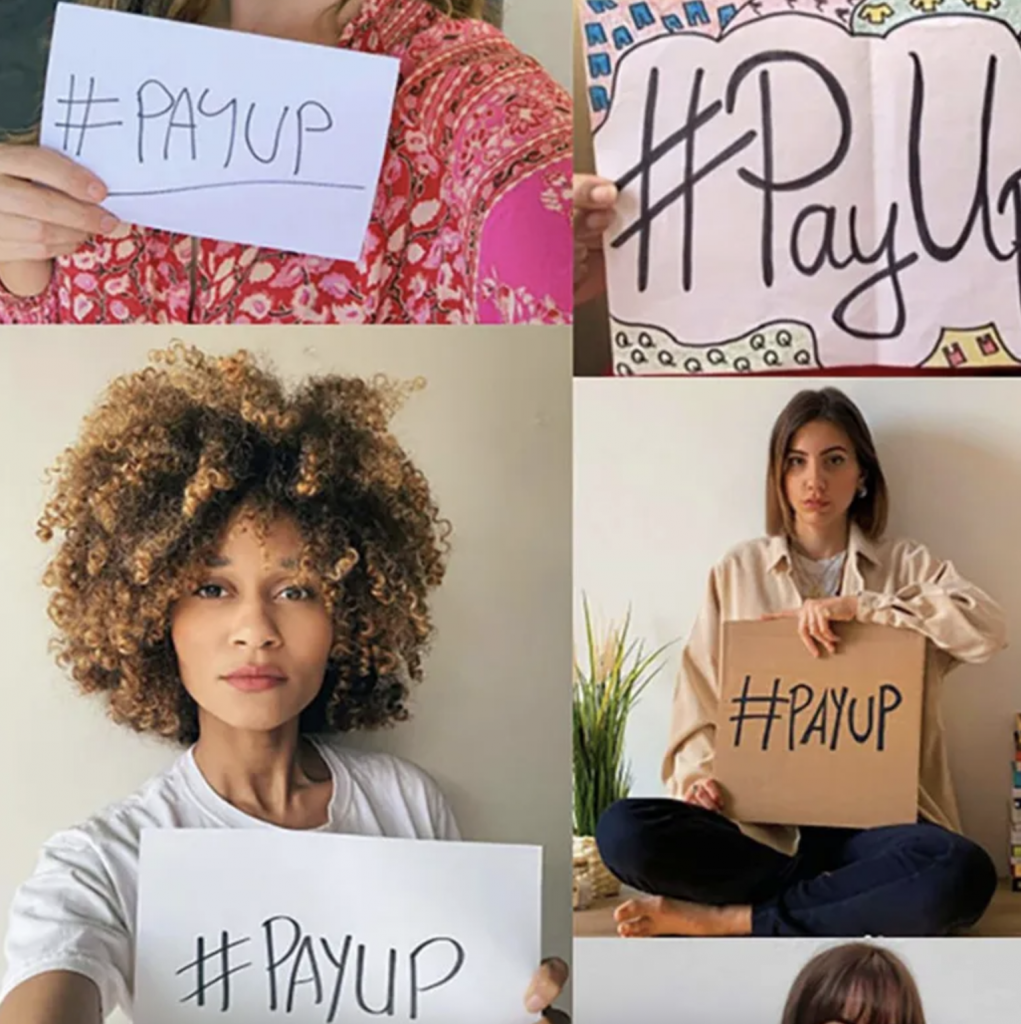
This clarity and confidence in tone helps Boohoo stay relevant, even as trends shift.
What marketers can learn:
- A clear, consistent tone builds trust and brand memory
- Speak the way your audience speaks, don’t sanitize your message for everyone
- Relevance isn’t just about what you say, but how and when you say it
4. Real campaign: #boohoofilterfree
In 2021, Boohoo launched the #boohoofilterfree campaign, a bold move aimed at shifting perceptions around beauty and authenticity on social media.
The campaign encouraged influencers and customers to post unfiltered, makeup-free selfies while wearing Boohoo clothing. It was a direct response to growing criticism of overly edited content and the pressure to look perfect online. By promoting natural, unedited photos, Boohoo joined the wider conversation around mental health, confidence, and body image.
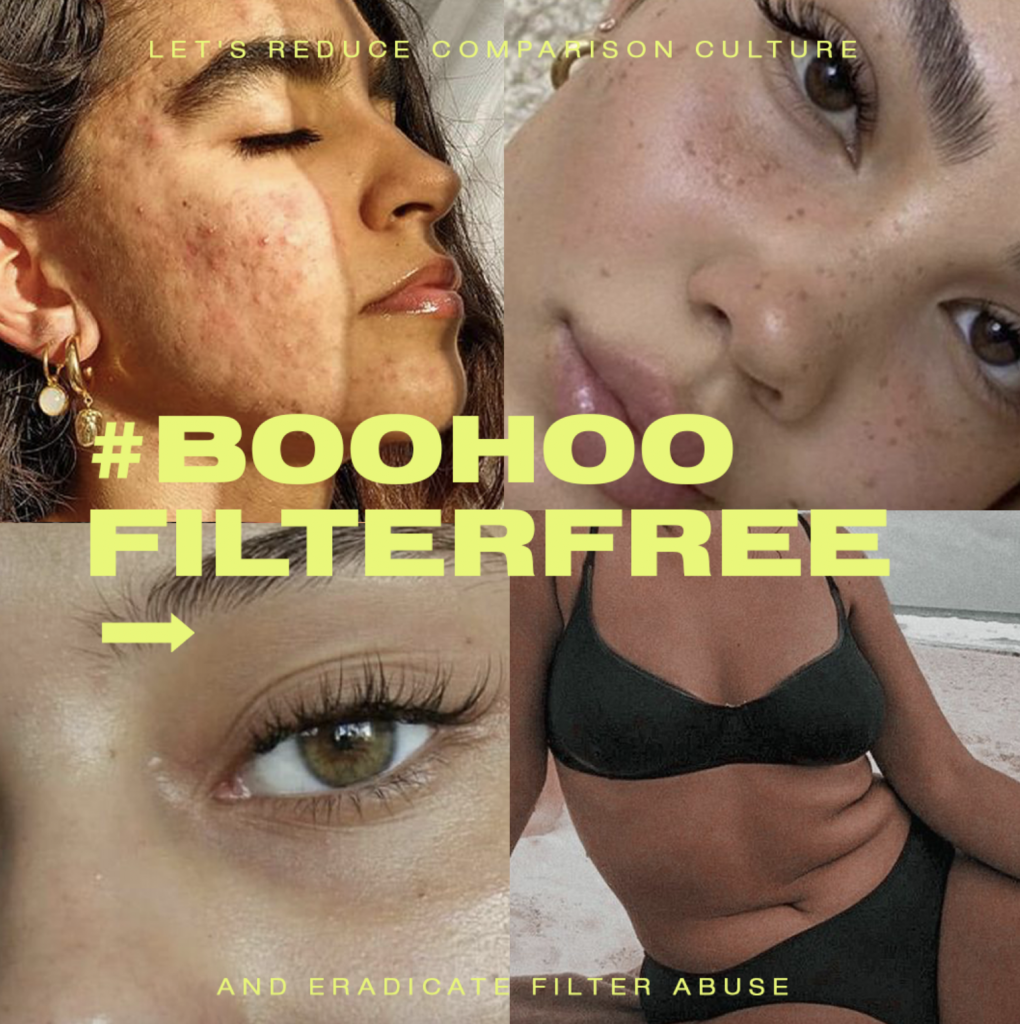
It wasn’t just a feel-good moment. The campaign drove serious engagement. Influencers shared personal stories, users flooded the hashtag with real content, and Boohoo received positive press for addressing an issue that mattered to their audience.
What made it work? Boohoo stayed true to its tone, playful, relatable, and direct, while tapping into a real emotional need for honesty in digital spaces.
What marketers can learn:
- Great campaigns don’t just promote, they participate in conversations
- User-generated content thrives when the call-to-action feels personal and empowering
- You can build brand love by taking a stand, especially when it aligns with your audience’s values
5. Conversion-first website and app experience
Boohoo doesn’t just attract attention, it converts it fast.
From the moment you land on their website or app, everything is designed to push urgency and remove friction. Flash sales, limited-time discounts, and countdown timers are everywhere. Banners shout “60% off ends tonight.” Pop-ups offer app-exclusive deals. Every click feels like it might save you money, or help you grab something before it’s gone.

But it’s not just noise. The flow is optimized. Products are easy to find. Filters are fast. The checkout process is simple. Personalization plays a strong role, with recommendations based on browsing and past purchases. Push notifications, cart reminders, and tailored emails keep shoppers engaged even after they leave.
It’s a classic fast fashion funnel, but executed with precision and volume.
What marketers can learn:
- Every element of your site should support the action you want users to take
- Urgency works, but only when paired with a seamless experience
- Personalization increases retention, especially in high-frequency categories
Conclusion
Boohoo’s rise wasn’t just about fashion. It was about speed, strategy, and knowing exactly how to speak to a digital-native audience.
Their marketing strategy combines influencer-driven growth, bold brand tone, urgency-based shopping experiences, and campaigns that tap into cultural conversations. From daily product drops to filter-free social moments, Boohoo understands how to stay visible, stay relevant, and drive conversions at scale.
For marketers, Boohoo offers a playbook for fast-moving e-commerce in a world that doesn’t slow down. If your brand can move quickly, stay culturally aware, and make every interaction count, you’re already halfway there.